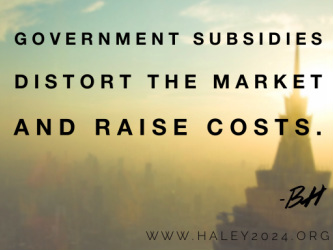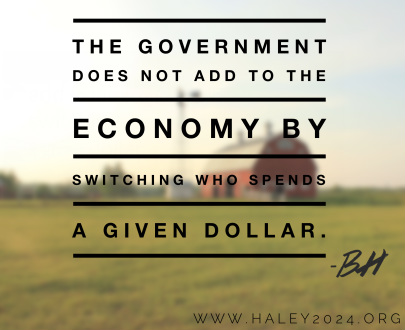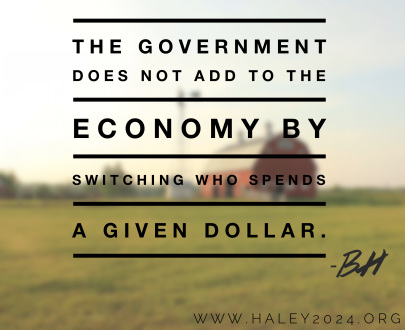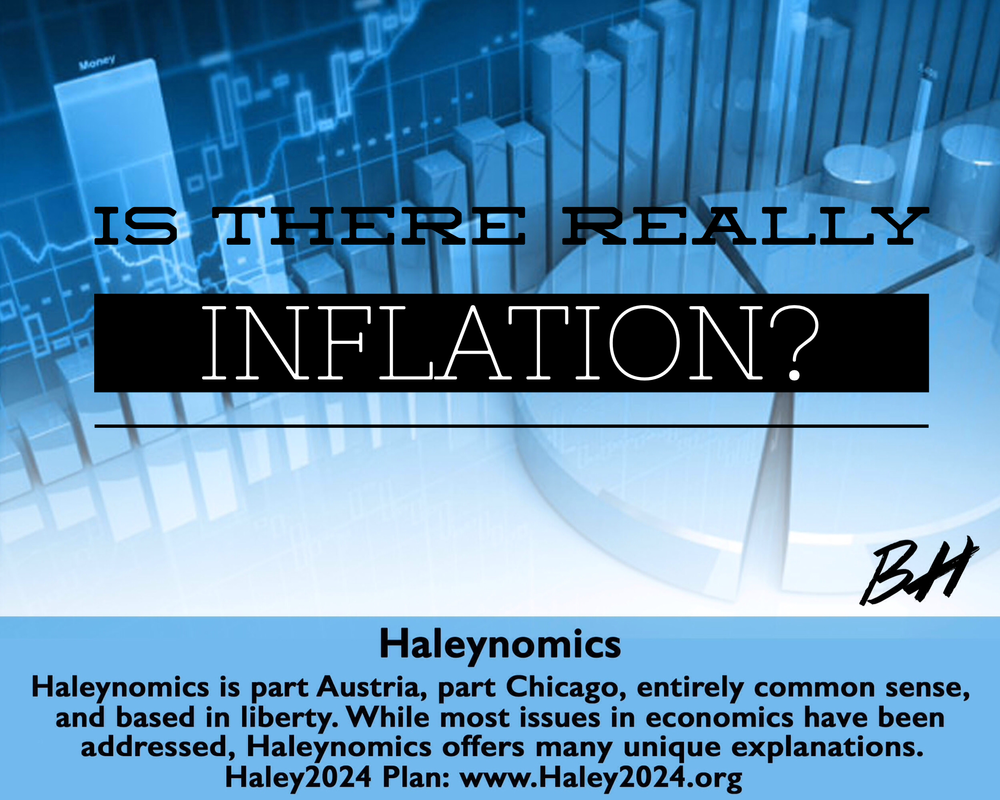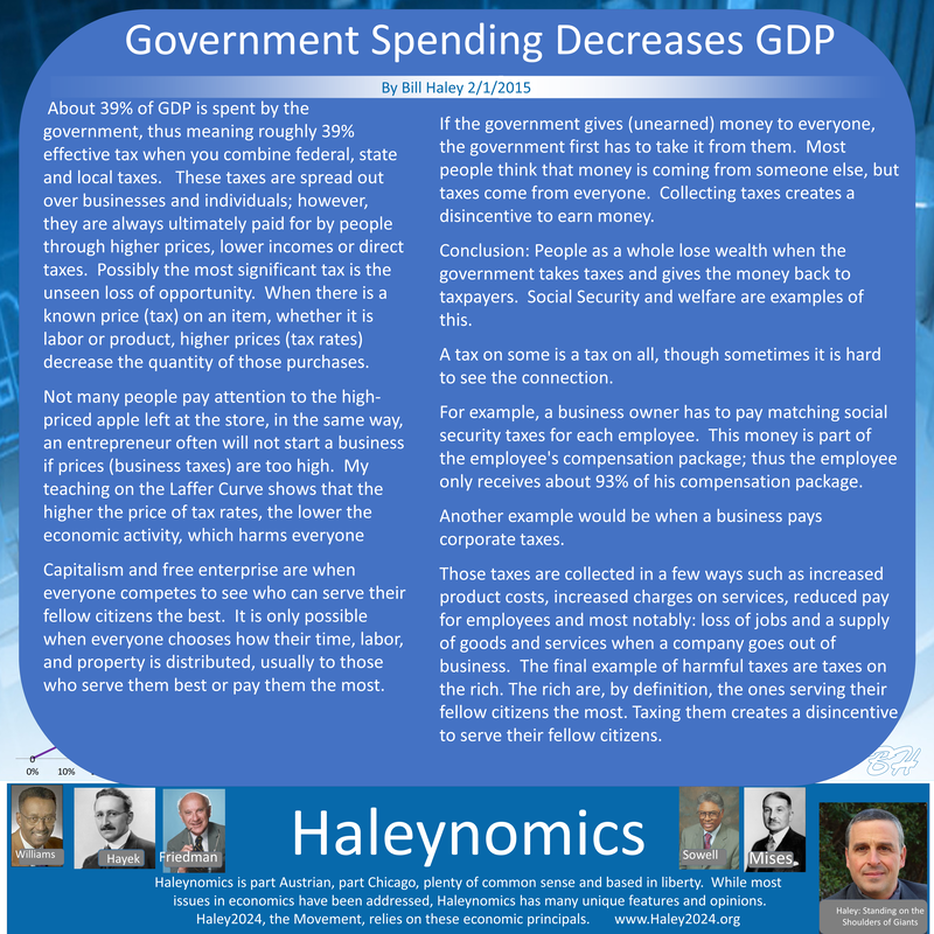| About 39% of GDP is spent by the government, thus meaning roughly 39% effective tax when you combine federal, state and local taxes. These taxes are spread out over businesses and individuals; however, they are always ultimately paid for by people through higher prices, lower incomes or direct taxes. Possibly the most significant tax is the unseen loss of opportunity. When there is a known price (tax) on an item, whether it is labor or product, higher prices (tax rates) decrease the quantity of those purchases. |
| Not many people pay attention to the high-priced apple left at the store, in the same way, an entrepreneur often will not start a business if prices (business taxes) are too high. My teaching on the Laffer Curve shows that the higher the price of tax rates, the lower the economic activity, which harms everyone. |
| If the government gives (unearned) money to everyone, the government first has to take it from them. Most people think that money is coming from someone else, but taxes come from everyone. Collecting taxes creates a disincentive to earn money. Conclusion: People as a whole lose wealth when the government takes taxes and gives the money back to taxpayers. Social Security and welfare are examples of this. |
| A tax on some is a tax on all, though sometimes it is hard to see the connection. For example, a business owner has to pay matching social security taxes for each employee. This money is part of the employee's compensation package; thus the employee only receives about 93% of his compensation package. Another example would be when a business pays corporate taxes. |
| Those taxes are collected in a few ways such as increased product costs, increased charges on services, reduced pay for employees and most notably: loss of jobs and a supply of goods and services when a company goes out of business. The final example of harmful taxes are taxes on the rich. The rich are, by definition, the ones serving their fellow citizens the most. Taxing them creates a disincentive to serve their fellow citizens. |
| For every dollar a business owner makes, others such as employees, suppliers, and subcontractors make much more. If a business owner made one million dollars instead of two million because of taxes and related disincentives, tens of millions of dollars are not earned by others associated with the business. |
